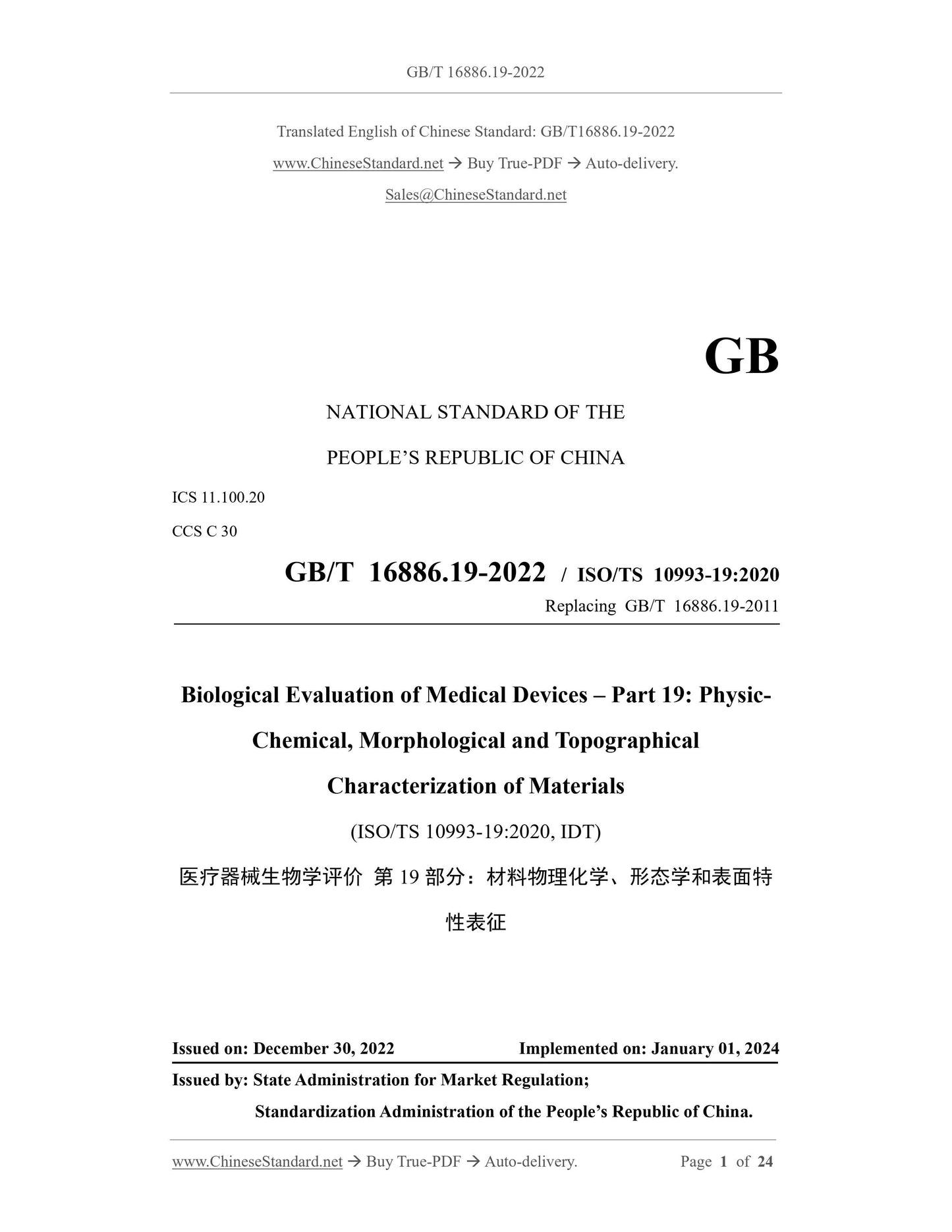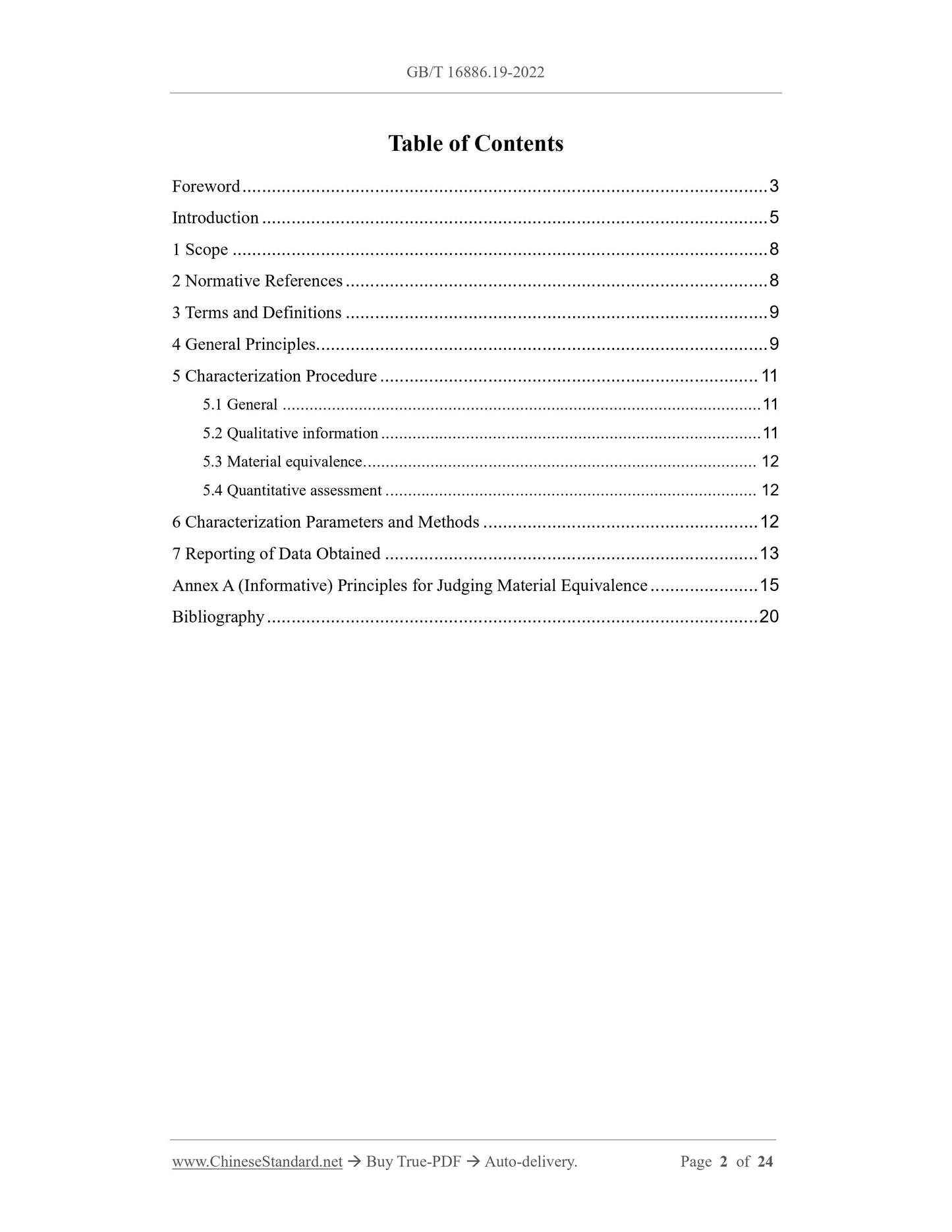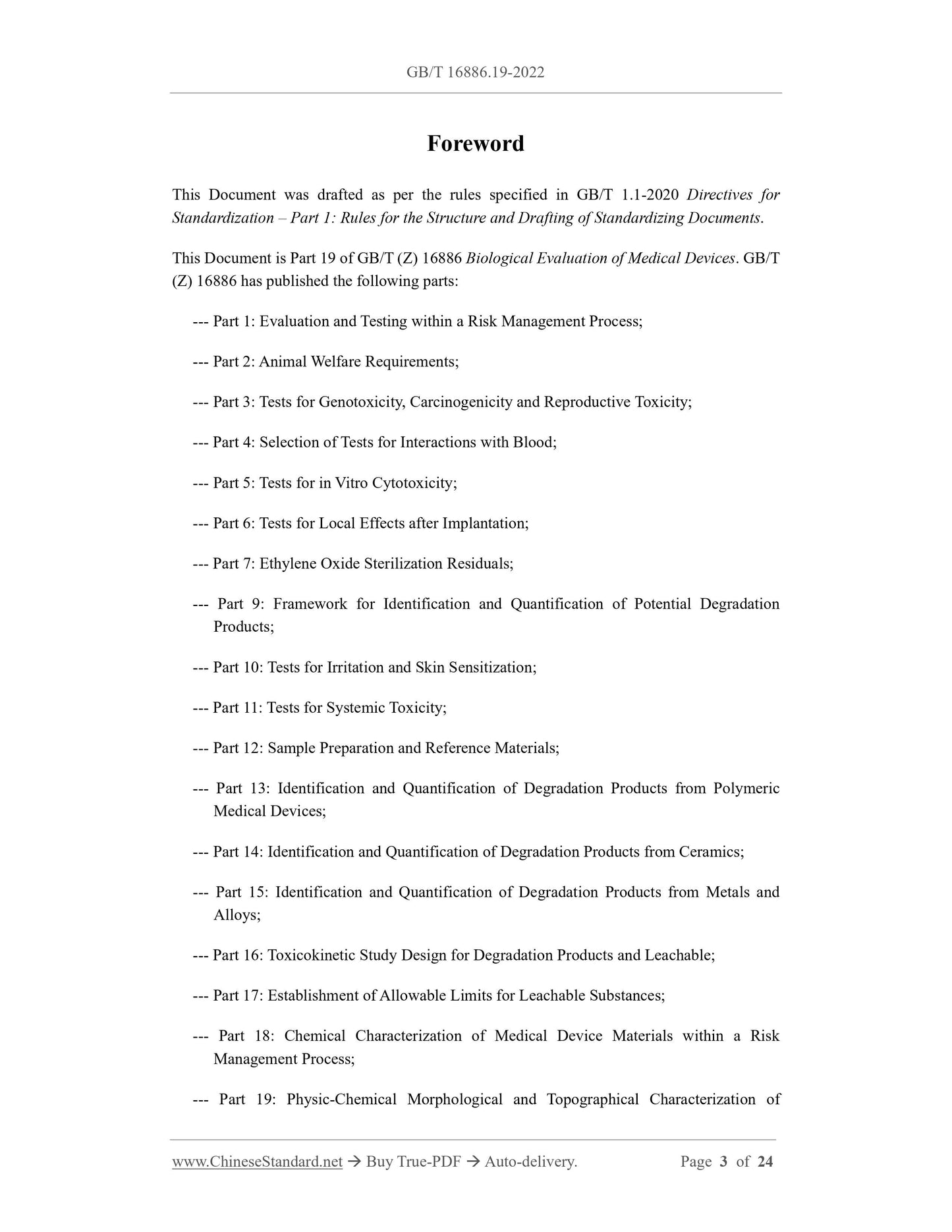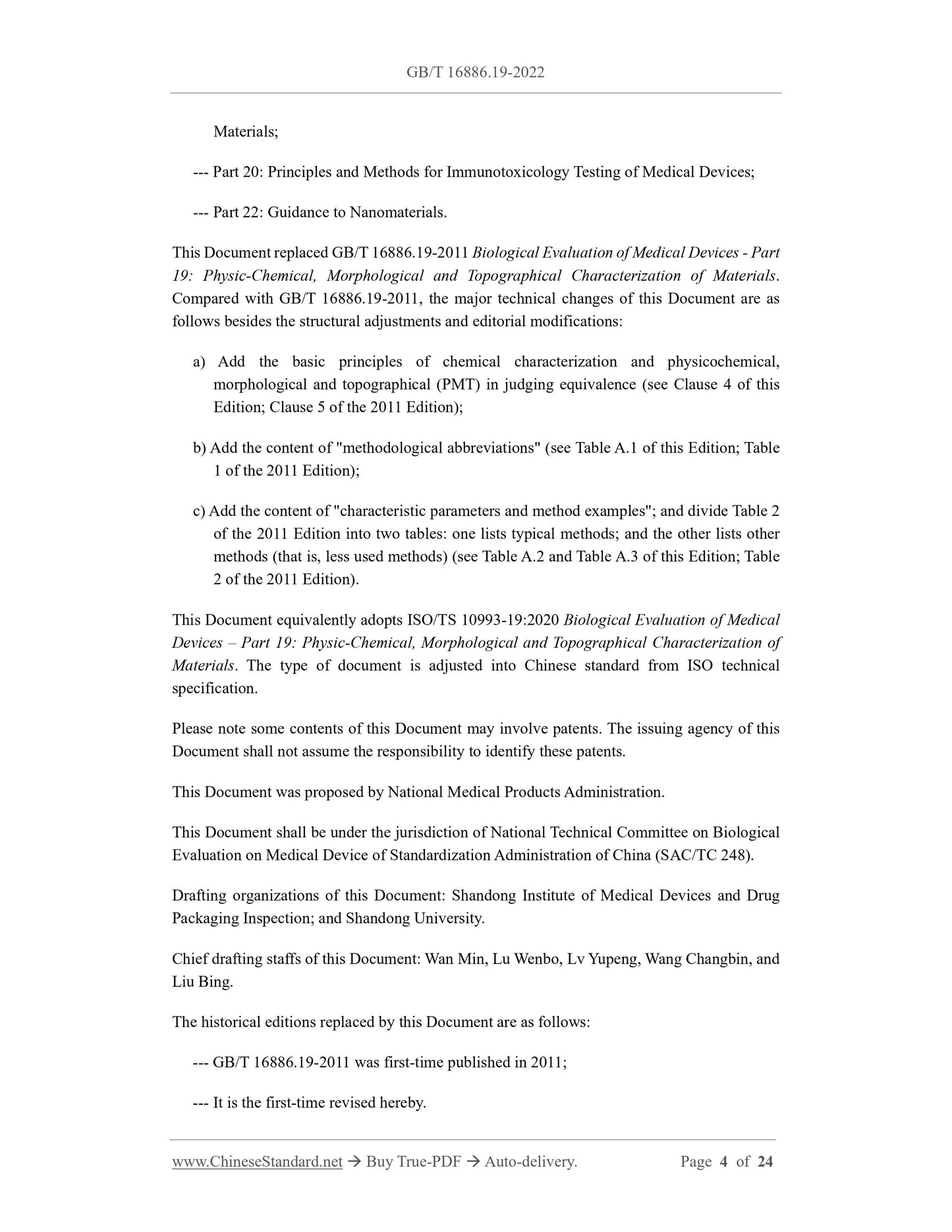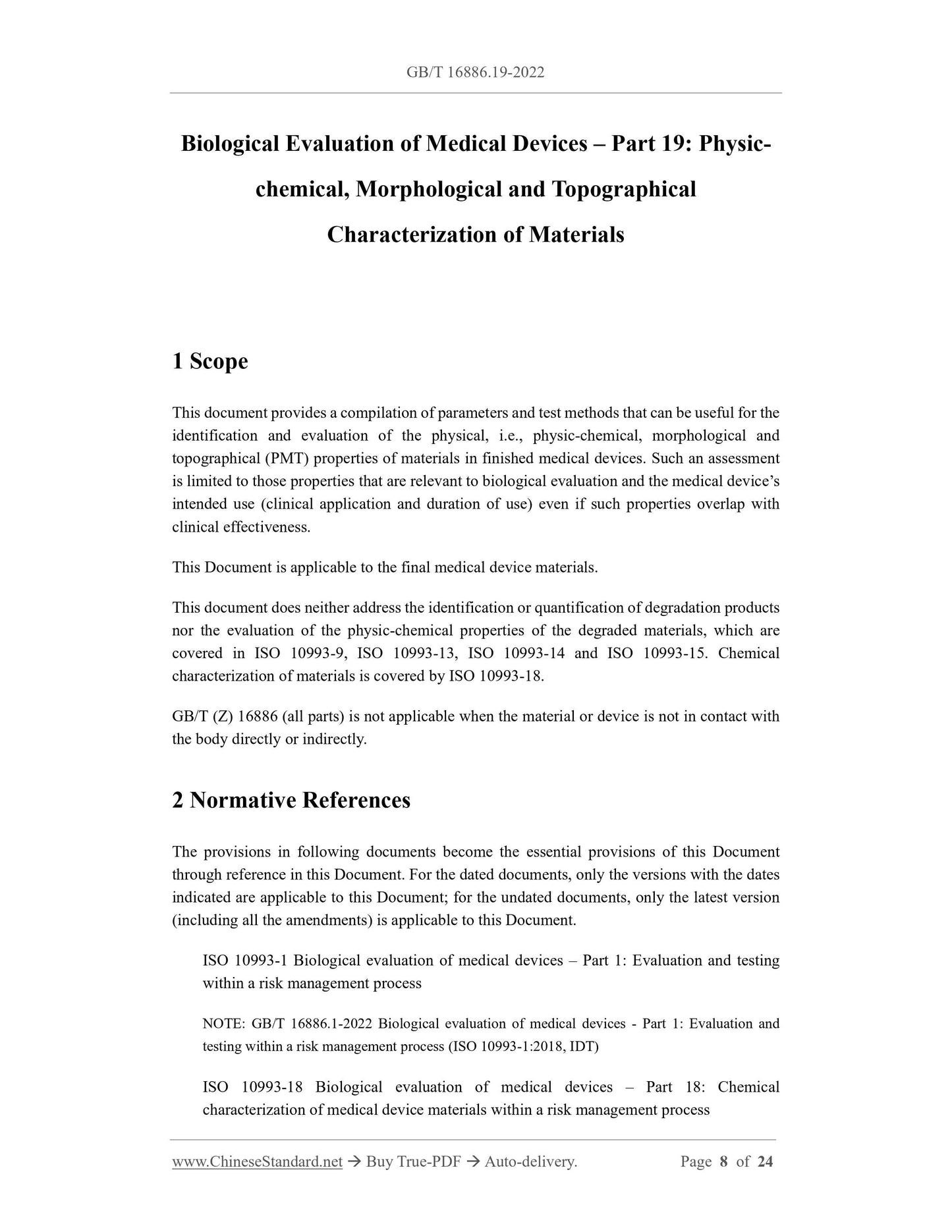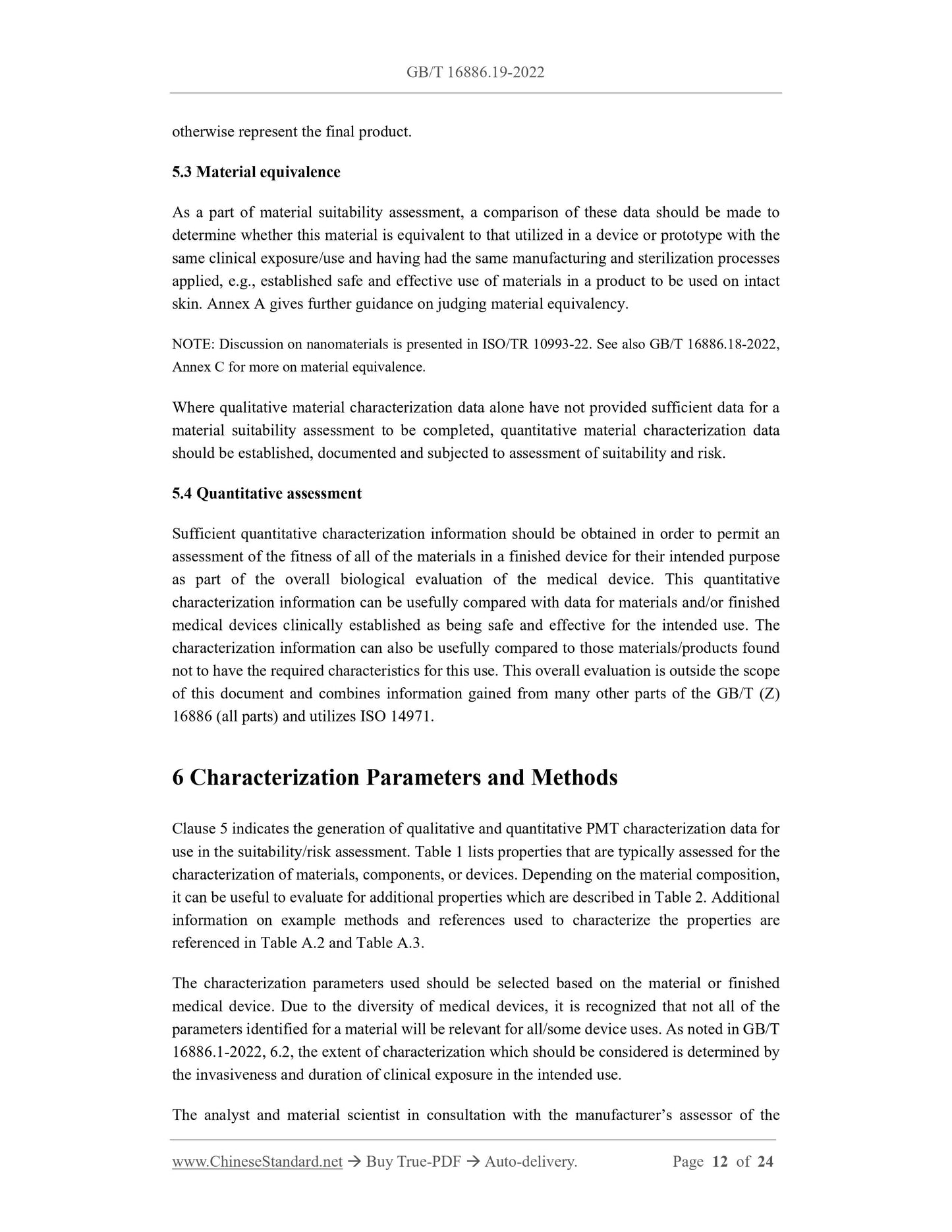1
/
of
6
www.ChineseStandard.us -- Field Test Asia Pte. Ltd.
GB/T 16886.19-2022 English PDF (GB/T16886.19-2022)
GB/T 16886.19-2022 English PDF (GB/T16886.19-2022)
Regular price
$290.00
Regular price
Sale price
$290.00
Unit price
/
per
Shipping calculated at checkout.
Couldn't load pickup availability
GB/T 16886.19-2022: Biological evaluation of medical devices - Part 19: Physico-chemical, morphological and topographical characterization of materials
Delivery: 9 seconds. Download (and Email) true-PDF + Invoice.Get Quotation: Click GB/T 16886.19-2022 (Self-service in 1-minute)
Newer / historical versions: GB/T 16886.19-2022
Preview True-PDF
Scope
This document provides a compilation of parameters and test methods that can be useful for theidentification and evaluation of the physical, i.e., physic‑chemical, morphological and
topographical (PMT) properties of materials in finished medical devices. Such an assessment
is limited to those properties that are relevant to biological evaluation and the medical device’s
intended use (clinical application and duration of use) even if such properties overlap with
clinical effectiveness.
Basic Data
| Standard ID | GB/T 16886.19-2022 (GB/T16886.19-2022) |
| Description (Translated English) | Biological evaluation of medical devices - Part 19: Physico-chemical, morphological and topographical characterization of materials |
| Sector / Industry | National Standard (Recommended) |
| Classification of Chinese Standard | C30 |
| Classification of International Standard | 11.100.20 |
| Word Count Estimation | 18,162 |
| Date of Issue | 2022-12-30 |
| Date of Implementation | 2024-01-01 |
| Older Standard (superseded by this standard) | GB/T 16886.19-2011 |
| Issuing agency(ies) | State Administration for Market Regulation, China National Standardization Administration |
Share
